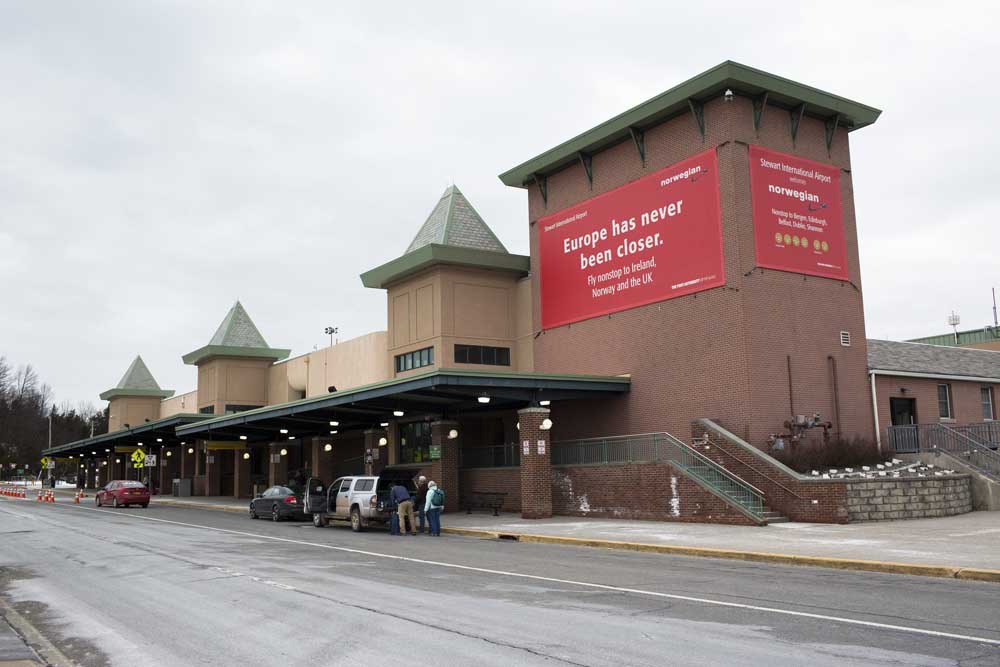Airport adopts new identity: New York’s budget flight hub
Published 12:00 am Wednesday, April 18, 2018

- New York Stewart International Airport, 67 miles north of New York City, expects to more than double passenger volume compared to 2017 as the region rediscovers a facility that is larger than Newark Liberty International.(Meredith Heuer for The New York Times)
NEW WINDSOR, N.Y. —
As the baggage claim area at New York Stewart International Airport filled with passengers arriving from Dublin last month, the airport’s manager of business development, Michael Torelli, shook his head with delight.
Just two years earlier, the airport, 67 miles north of New York City, had 275,000 passengers, its slowest year since the Port Authority of New York and New Jersey began running it 11 years ago. This year, passenger volume is projected to more than double that as the region rediscovers an airport with more land than Newark Liberty International Airport and just a tiny fraction of its passenger volume.
“Where are you going to get the space to build a new airport now?” Ed Harrison, general manager of Stewart Airport, asked.
The grounds include woodlands and a reservoir, giving the airport a rural feel. But the property, formerly a military airport, also contains an industrial park, a U.S. Department of Agriculture animal inspection center, three air cargo operators, an Air National Guard base and a runway long enough to handle the largest jetliners.
“We have 2,500 acres that are strategically located at the intersection of I-84 and 87, that now we’re advertising with access to New York City by bus for $20,” Harrison said, referring to a shuttle service outside the passenger terminal. “The sky is the limit.”
Some of the optimism about the airport’s future is attributable to Norwegian Air International, a low-cost carrier based in Ireland that offers flights to the United States with one-way fares that often dip below $100. “Stewart has enormous potential to be a real gateway airport to the New York area,” said Rick Cotton, the Port Authority’s executive director.
The agency has spent $200 million during the past decade to improve the airport, and an additional $30 million has been set aside for the construction of a 20,000-square-foot hall for international arrivals. When complete in 2019, the hall will be able to process 400 passengers an hour.
By focusing on a low-cost carrier identity, Stewart is part of a growing trend among airports in the United States. It is following a pattern established in Europe and Asia, where budget airlines have reinvigorated smaller airports on the outskirts of major cities, said Matthew J. Cornelius, vice president of air policy at Airport Council International, an industry group.
“They’ve had the ability to strengthen their power, and now the Europeans are coming across the Atlantic,” Cornelius said.
Cornelius added that the international airlines were seeking smaller airports like Stewart. “They’re used to operating at secondary airports, so it’s a natural.”
Several former military airports on the periphery of large metropolitan areas in the United States have been repurposed. Their prime location, along with assets like long runways and underlying infrastructure, can help communities keep up with increasing demand for air travel.
Traffic jams are frequent on the sole highway leading to Seattle Tacoma International Airport, which has grown over the past few years to become one of the nation’s busiest airports. Sea-Tac, as it is known, served nearly 47 million travelers in 2017, a 25 percent increase over five years.
But 12 miles north in Snohomish County, away from the congestion on Interstate 5, a former military airfield called Paine Field was being used by Boeing for test flights and general aviation. It was ripe for commercial flights, said Brett Smith, chief executive of Propeller Airports in New York, which is developing a passenger terminal at the airport with county officials.
The Alaska Airlines subsidiary Horizon Air, United Airlines and Southwest Airlines have announced that they will offer multiple daily flights at Paine Field while continuing service at Sea-Tac.
“The fact they’re splitting their operation shows how much Seattle needs this,” Smith said.








